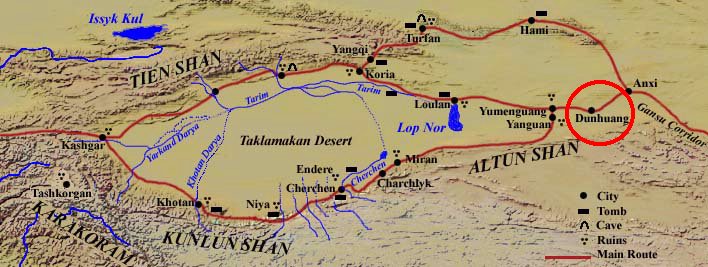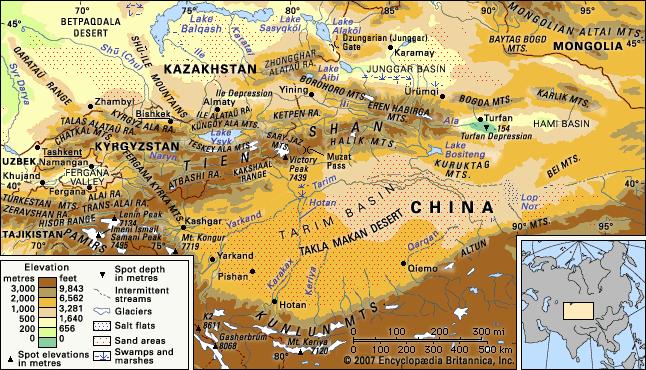Mysterious Ancient Caves that Could Rewrite History
/Caves are more than just hollow places in our earthly ground; they play a very indispensable role in the story of mankind. Aside from serving as a shelter for our earliest ancestors, ancient caves also serve as a rich source of many extraordinary artifacts, mysterious undeciphered symbols, and traces of unknown human civilizations in different parts of the world. For some old cultures, several of which still endure to this day, these caves were seen in a mystical and a magical light, while some archaeologists have discovered evidence in these places that raise several compelling and unanswered questions about our distant past.
And so, in this list, let us talk about seven of the most mysterious ancient caves that could re-write history as we know it.
2. Theopetra Cave – Thessaly, Greece
Located at the foot of the Chasia mountain range, which serves as the natural boundary between Thessaly and Macedonia prefectures, the Theopetra Cave is a unique archaeological site that holds many ancient secrets. The site contains one of the longest archaeological sequences in Greece as it contained cultural remains from the Middle and Upper Paleolithic as well as Mesolithic and Neolithic periods, bridging the Pleistocene epoch with the Holocene. Earliest estimation of human inhabitants in the cave dates back to 130,000 years ago, and the site is also the home to the oldest known example of man-made structure – an ancient stone wall that is believed to have been constructed 23,000 years ago as a probable barrier against cold winds. Excavations of the Theopetra Cave started in 1987, and over the years, more and more groundbreaking discoveries have been uncovered by experts in this ancient place.
2. Ciur-Izbuc Cave – Transylvania, Romania
In 1965, Ciur-Izbuc Cave in the Carpathian Mountains of Romania was found to contain around 400 ancient human footprints. At the time of its discovery, researchers were of the opinion that the footprints were made by a man, woman and child who was in the cave approximately 10,000 to 15,000 years ago. However, according to a recent study published in the American Journal of Physical Anthropology, the ancient human footprints found in the Romanian cave are actually more than 35,000 years old. Radiocarbon testing on the bear bones found buried just beneath some of the footprints revealed that they are tens of thousands of years older than the initial estimate. To scientists, the footprints found in the Ciur-Izbuc Cave are evidence of the earliest known humans in Europe, which was only previously determined through the discovery of animal bones and stone tools.
3. Royston Cave – Hertfordshire, England
The Royston Cave is an artificial cave that was discovered in August 1742. When it was found, the cave was half-filled with dirt and rock, but once the earth was removed, they found several sculptures and carvings, which date as far back as 1200 AD. The images of the artifacts found in the cave are mostly religious in nature, including a depiction of the Holy Family and the Crucifixion. It remains unknown who created the artificial cave or what its purpose was when it was made, but there has been much speculation in answering this mystery. Some believe that the Royston Cave was used by the Knights Templar, while others think it may have been an Augustinian store mine. However, none of these theories have been substantiated yet, leaving the origin of the cave to continue as an enigma even until now.
4. Huashan Caves – Huangshan, China
Manually chiseled more than 1700 years ago, the Huashan caves are steeped in ancient and mysterious legends. Each cave ranges from 10 to 20 meters in height, with their variously-shaped stone columns supporting the ceilings. A total of 36 chambers have been found among the Huashan Hills, and their neatly chiseled walls and roofs, big pillars and stone stairs indicate that these caves were excavated by men. Because there are currently no historical records revealing why our ancestors in China dug the Huashan Caves, a variety of guesses have been presented in an attempt to resolve this mystery. Some believe the caves were dug to produce stone which probably had been used to build a nearby town. Another theory suggests that the caves were once used to station troops. There is also speculation that the caves were used as imperial tombs but were somehow abandoned later on. However, despite these interesting guesses, the true purpose of the Huashan Caves remains a mystery left unanswered by modern man.
5. Ellora Caves – Maharashtra, India
Situated not far from Aurangabad, in the Indian state of Maharashtra, the site is home to 34 monasteries and temples, extending over a distance of more than 2 kilometers. Unlike past examples in history, where the dominant religion of a particular time and place brought down the temples and structures of other groups, replacing them with their own, the Ellora Caves is proof that tolerance, acceptance, and co-existence of different religions are possible. The caves are a unique sanctuary that blends the art and culture of three religions – Buddhism, Hinduism, and Jainism. It is unclear when these caves were built, but estimates range from between 200 B.C. and 600 A.D. to 600 A.D. and 1000 A.D.
6. Piyang Caves – Tibet
The Piyan Caves are among the most important caves of Tibet, situated in the western part of the Tibetan Plateau and close vicinity of the sacred Mount of Kailash. There are over 1,100 caves at the site of different shapes and sizes – some are habitation sites, while other locations are believed to be meditation or ritual caves governed by gods and spirits. Humans inhabited the Tibetan Plateau at least 21,000 years ago, so there are speculations that numerous ancient artifacts and relics are hidden in the caves, tunnels, dark subterranean passages and other mysterious areas at the site, many of which have yet to be localized. The Piyang region covers an area of 10,000 square meters, making it difficult to explore. In the many temples built in the vicinity, there are prehistoric castle walls, murals, sculptures, pagodas and Buddhist niches filled with priceless paintings. However, no one really knows for sure where all the ancient scriptures, historical paper scrolls and prehistoric books believed to be safeguarded in the caves are really hidden.
7. Denisova Cave – Siberia, Russia
Located in the northwestern Altai Mountains some 6 kilometers away from the village of Chernyi Anui, the Denisova Cave is a rock shelter where a series of scientific discoveries on man’s origins have been made in recent years. In 2008, a finger bone fragment of a juvenile female – referred to as the “X woman” – was found at the site. Experts have estimated that the female lived around 41,000 years ago, and analysis has indicated that this creature was genetically distinct from Neanderthals and modern humans. This previously unknown and long extinct hominin species or subspecies has been named Denisovan after the cave where the bone fragment was discovered. In 2010, analysis on an upper molar from a young adult which was found in the cave ten years earlier was also determined to be from a Denisova hominin. The cave is located in a region thought to have also been inhabited concurrently in the past by Neanderthals and modern humans, making the site the one place we know so far where all three human forms have lived at one time or another.
The ancient caves we have mentioned are just a few of many archaeological sites that have the potential to rewrite history as we know it. These ancient sites and their abundant resources of historical and archaeological evidences are still being extensively explored and studied until now, as many believe that these caves still hide an abundance of secrets and discoveries that could fill the missing pieces in the origins of humanity.
Sources:
http://www.messagetoeagle.com/10-mysterious-ancient-caves-that-could-re-write-history/
http://www.ancient-origins.net/ancient-places/ten-amazing-caves-ancient-world-002957?nopaging=1
http://www.messagetoeagle.com/ancient-secrets-of-the-theopetra-cave-worlds-oldest-man-made-structure-and-home-to-humans-130000-years-ago/
https://en.wikipedia.org/wiki/Theopetra_cave
http://www.ancient-origins.net/news-evolution-human-origins/oldest-european-human-footprints-romanian-cave-102003
http://www.messagetoeagle.com/unanswered-questions-related-to-the-mysterious-huashan-caves/
http://www.ancient-origins.net/ancient-places-asia/magnificent-ellora-caves-india-001605
http://www.messagetoeagle.com/ancient-secrets-hidden-in-the-piyang-caves-mysterious-sacred-caves-of-tibet/
http://www.messagetoeagle.com/first-unique-view-inside-denisova-cave-ancient-history/#.V9Mi4_mLSM9
https://en.wikipedia.org/wiki/Denisova_Cave
https://www.thoughtco.com/denisova-cave-only-evidence-denisovan-people-170604
























